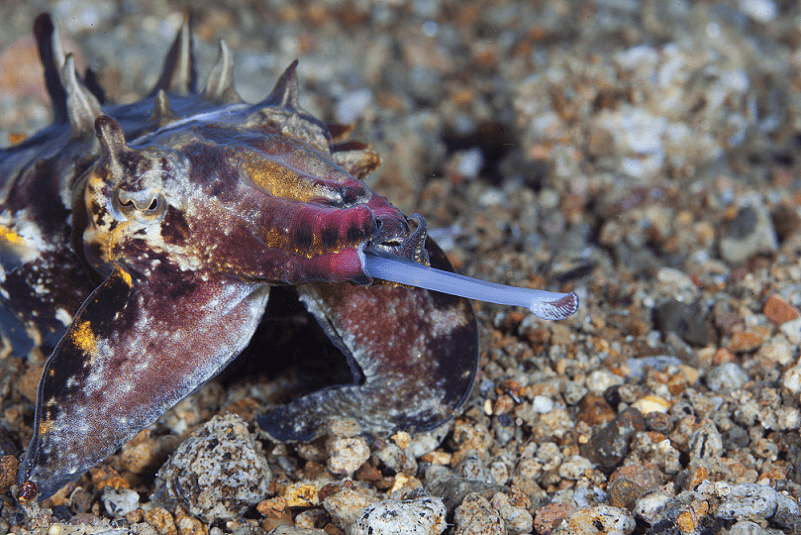Flamboyant Cuttlefish Facts
- The flesh of this astonishing creature holds within it certain acids which make the flesh of the animal inedible for humans.
- Surprisingly, the Flamboyant Cuttlefish is also actually highly toxic. This makes the species one of only three known poisonous cephalopods in all the world’s oceans. In fact, the toxicity level of its venom is equal to that of the blue-ringed octopus.
- This seemingly innocuous creature ranks as one of the deadliest inhabitants of the seas.
Flamboyant Cuttlefish Physical Characteristics
The adult Flamboyant Cuttlefish typically attains an average mantle length of roughly 3.1 in (8 cm). The arms grow wide, and quite thin, and are covered in numerous small suckers which lay in four distinct rows.
The males also possess one modified arm which they use almost exclusively for reproduction. Further, the cuttlebone of this species is smaller than in others, relative to size.
The body colors are bright and interestingly vary widely among individuals.
- Kingdom: Animalia
- Phylum: Mollusca
- Class: Cephalopoda
- Order: Sepiidae
- Family: Sepiidae
- Genus: Metasepia
- Species: M. pfefferi
Flamboyant Cuttlefish Distribution, Habitat and Biology
The Flamboyant Cuttlefish forms a brilliantly colorful species of cuttlefish native to a particular region of the Indo-Pacific Ocean. That zone of habitation includes the waters of New Guinea, Australia, Indonesia, Malaysia, and the Philippines.
The Flamboyant Cuttlefish prefers comparatively shallow water. Also, due to the comparatively small size of its cuttlebone, it inhabits the ocean floor which makes it the only known cuttlefish species to do so. In fact, it inhabits depths ranging from between 10 – 282 ft (3 – 86 m). Further, muddy sediment and sand are its favorite regions.
The cuttlefish remains primarily active during the daytime when it hunts its prey, principally small crustaceans, and fish. Certainly, its color patterns provide excellent camouflage within its choice of habitats.
Check out our articles on 5 Fabulous Gulf of Mexico Fish, Flamingo Tongue Snail, Lumpfish, Spotted Handfish, Glass Octopus, Striped Pyjama Squid, Tongue Eating Louse

